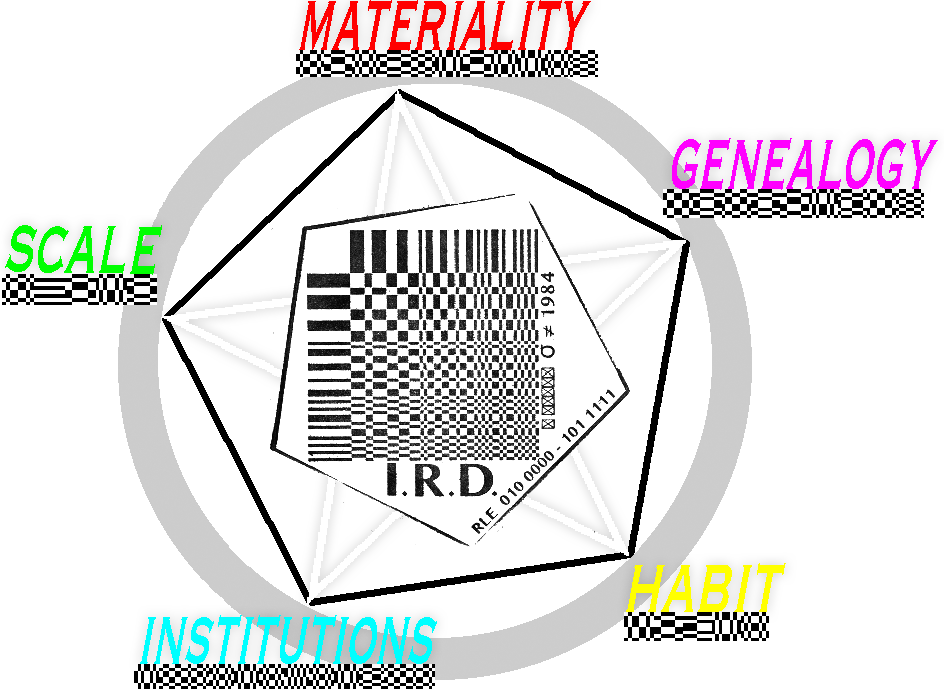7/06/2008
(`'•.¸(` '•. ¸ * ¸.•'´)¸.•'´)
«´¨`¸* Introduction *¸´¨`»
(¸. •'´(¸.•'´ * `'•.¸)`'•.¸ )
In 1961, in the First Preface to Histoire de la folie, Foucault writes that the modern man and the madman no longer communicate; there is no longer a common language connecting the two; there is only silence. According to him, the language of psychiatry, which is a monologue of reason on madness, was able to establish itself only on the basis of this silence:
[…] the constitution of madness as mental illness, at the end of the eighteenth century, affords the evidence of a broken dialogue, posits the separation as already acquired, and thrusts into oblivion all those imperfect words, without a fixed syntax, and a little stammered, through which the exchange of madness and reason took place.
Foucault writes that reason is the cultural standard against which everything is measured up. Everything that falls outside of this standard falls inside a void. But this void constitutes culture as much as everything that culture itself is made up from; consequently, there can be no reason without madness. While reading this preface, the many similarities between madness and particular (current) art practices got me very excited. My comparison was particularly focused on the field of digital glitch art.
I use the term glitch (in digital glitch art) as a sign of a break from a flow within a system, which often results in a perceived accident or error. A glitch occurs when there is an absence of an ideal functionality, whether understood in a technical, or social sense. Therefore a glitch, as I see it, is not always strictly a result of a technical malfunction, and its cause is not always technically definable. Focusing on the glitch within this broader perspective makes it possible to include some of the more interesting political and social uses of the glitch within the field of digital art.
Foucault concludes his Preface with the observation that the role of madness within ‘the history of becoming’ is a very small one, and does not alter the great, reasonable calm of history. Even so, he sets out to write an archaeology of the silence that exists between the man of reason and the man of madness, because, as he puts it, interrogating what is outside a culture is to question a divide.
I think that, in accordance with Foucault’s conclusion, there is a need for a better understanding of glitch art, whether focused on its political significance or its position within art history. The In-between Manifesto (Faber, Heijden en Menkman, 2008) can be considered as a starting point for this quest.
Foucault, M. “First Preface to Histoire de la folie” and Preface to the Italian edition of “La volonté du savoir”. In Pli 13 (2002):1-12.
Online: http://www.warwick.ac.uk/philosophy/pli_journal/vol_13.html p. 6
Williams, Raymond. Television: Technology and Cultural Form. Hanover: University Press of New England, 1974.
Subscribe to:
Post Comments (Atom)



1 comment:
moreMOREmoreMOREmoreMOREmoreMOREmoreMOREmoreMOREmoreMOREmoreMOREmoreMOREmoreMOREmoreMOREmoreMOREmoreMOREmoreMOREmoreMOREmoreMOREmoreMOREmoreMOREmoreMOREmoreMOREmoreMOREmoreMOREmoreMOREmoreMOREmoreMOREmoreMOREmoreMOREmoreMOREmoreMOREmoreMOREmoreMOREmoreMOREmoreMOREmoreMOREmoreMOREmoreMOREmoreMOREmoreMOREmoreMOREmoreMOREmoreMOREmoreMOREmoreMOREmoreMOREmoreMOREmoreMOREmoreMOREmoreMOREmoreMOREmoreMOREmoreMOREmoreMOREmoreMOREmoreMOREmoreMOREmoreMOREmoreMOREmoreMOREmoreMOREmoreMOREmoreMOREmoreMOREmoreMOREmoreMOREmoreMOREmoreMOREmoreMOREmoreMOREmoreMOREmoreMOREmoreMOREmoreMOREmoreMOREmoreMOREmoreMOREmoreMOREmoreMOREmoreMOREmoreMOREmoreMOREmoreMOREmoreMOREmoreMOREmoreMOREmoreMOREmoreMOREmoreMOREmoreMOREmoreMOREmoreMOREmoreMOREmoreMOREmoreMOREmoreMOREmoreMOREmoreMOREmoreMOREmore..yesIsaid..moreMOREmoreMOREmoreMOREmoreMOREmoreMOREmoreMOREmoreMOREmoreMOREmoreMOREmoreMOREmoreMOREmoreMOREmoreMOREmoreMOREmoreMOREmoreMOREmoreMOREmoreMOREmoreMOREmoreMOREmoreMOREmoreMOREmoreMOREmoreMOREmoreMOREmoreMOREmoreMOREmoreMOREmoreMOREmoreMOREmoreMOREmoreMOREmoreMOREmoreMOREmoreMOREvMORE
Post a Comment